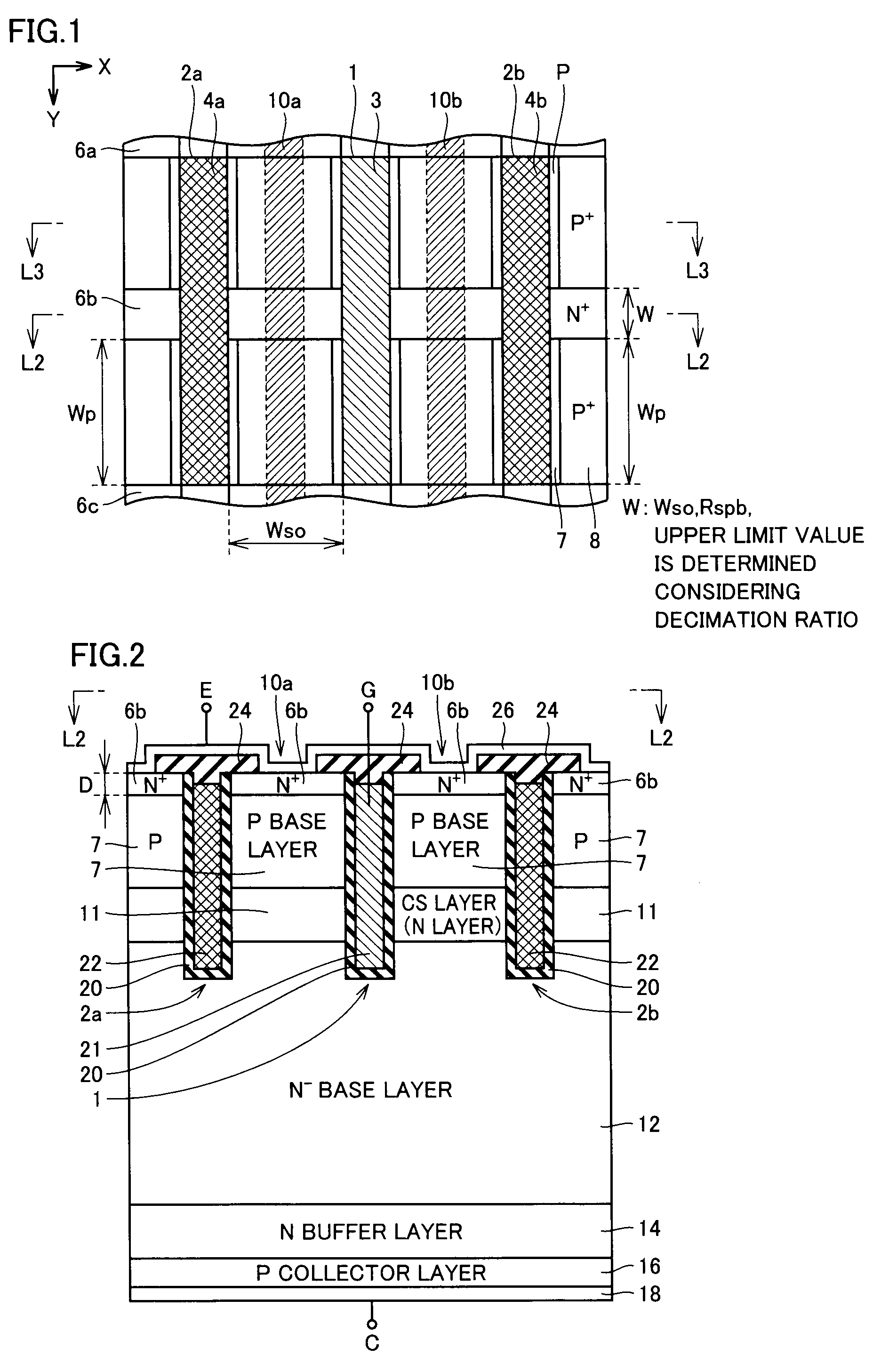Semiconductor device
a technology of semiconductors and devices, applied in the direction of semiconductor devices, electrical devices, transistors, etc., can solve the problems of reducing the efficiency of semiconductor devices, so as to achieve stable operation
- Summary
- Abstract
- Description
- Claims
- Application Information
AI Technical Summary
Benefits of technology
Problems solved by technology
Method used
Image
Examples
first embodiment
[0038]FIG. 1 schematically shows a surface layout of an IGBT in accordance with a first embodiment of the present invention. In FIG. 1, an emitter electrode is not shown for brevity of the drawing.
[0039]In FIG. 1, trench regions 1, 2a, and 2b are provided linearly extending in a Y direction and being spaced from each other in an X direction. A gate electrode layer 3 is formed in trench region 1, and insulating materials 4a and 4b are deposited on inner walls of trench regions 2a and 2b, respectively. Trench regions 2a and 2b do not serve as gate electrodes, and are provided to narrow an ejection path for minority carriers (holes) to increase ejection resistance to the minority carriers (holes: hereinafter simply referred to as holes) for accumulating the holes.
[0040]Gate electrode layer 3 in trench region 1 forms a channel along a side wall of trench region 1 according to a voltage applied to gate electrode layer 3, and serves as an effective gate of a semiconductor device. In the d...
PUM
 Login to View More
Login to View More Abstract
Description
Claims
Application Information
 Login to View More
Login to View More - R&D
- Intellectual Property
- Life Sciences
- Materials
- Tech Scout
- Unparalleled Data Quality
- Higher Quality Content
- 60% Fewer Hallucinations
Browse by: Latest US Patents, China's latest patents, Technical Efficacy Thesaurus, Application Domain, Technology Topic, Popular Technical Reports.
© 2025 PatSnap. All rights reserved.Legal|Privacy policy|Modern Slavery Act Transparency Statement|Sitemap|About US| Contact US: help@patsnap.com



